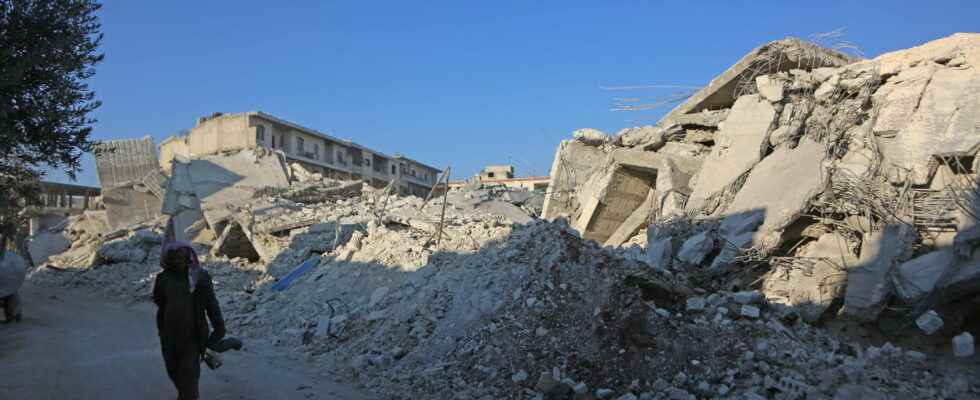Three earthquakes occurred in Turkey during the month of February 2023. The earthquakes called aftershocks and could cause further tremors elsewhere in neighboring regions of Turkey.
Three earthquakes have rocked Turkey and Syria in just two weeks, not counting the thousands of aftershocks. Will other earthquakes follow in the coming days? The question is legitimate, since the first earthquake, which occurred on Monday February 6, 2023, seems to be at the origin of the major tremors of February 7 and 20. Measuring 7.8 on the Richter scale, the earthquake in early February upset the fragile balance of the plate system located in Anatolia, causing tremors at epicentres a few hundred kilometers away but still on the same fault. “We thought that these earthquakes could have transferred the seismic stress to the south and we said: ‘Beware of the Adana basin and the Hatay region'”, recalled the geologist and professor member of the committee. scientist Naci Görür on February 21 in the Turkish media.
With the meeting of three tectonic plates and faults several hundred kilometers long, the risk of a new earthquake triggering exists and can be high depending on the region. Istanbul and its surroundings, in the northwest of the country, could be worried according to specialists like Professor Süleyman Pampal, in the columns of Cumhuriyet. “The tearing of the fault can continue”, also warned the specialist, which would not be without consequence in the neighboring regions of southern Turkey: Syria, Lebanon, Israel or even Cyprus.
Other possible earthquakes in southern Turkey?
The earthquakes that occurred on February 6, 7 and 20 are all related to the East Anatolian fault and the Dead Sea fault, which form the meeting point between three tectonic plates: the Eurasian, African and Arabian plates. The earthquakes which were respectively recorded with magnitudes of 7.8, 7.4 and 6.4 discharged a significant amount of seismic energy and “shattered [la partie turque] of the Dead Sea fault”, according to the geologist Navi Görür who estimates that “there will be no more great earthquakes in Hatay and Kahramanmaraş”. The south-east of Turkey should therefore, according to the analyzes of the specialists, to be spared from new earthquakes, except for aftershocks.
Read also
Repercussions of feared earthquakes in southern and northern Turkey
The seismic force released by the three earthquakes in Turkey, however, could affect the balance of nearby plates and faults. Turkish specialists interviewed by local media warn of possible earthquakes in southern Turkey, especially in Cyprus where the Eurasian and African plates meet and on the side of Syria or Lebanon, areas located near the fault. of the Dead Sea, also called the Levant Rift.
“Earthquakes may cause some movement in Cyprus. Seismic stress may have been sent to the north and east after the Kahramanmaraş earthquake. Therefore, faults may have been loaded” in these regions, explained geologist Naci Görür. And Professor Süleyman Pampal agrees: “This area is still at high risk. The rupture continues to the south and north of this fault which is 1000 kilometers long. […] There is an earthquake of up to 8 magnitude in the direction of Syria, Lebanon and Israel.”
An earthquake expected in Istanbul, in northern Turkey?
If the worst seems to have passed in the south of Turkey, in the north of the country, the North Anatolian fault represents a strong seismic risk. According to Professor Süleyman Pampal, the recent earthquakes “are not able to affect the Istanbul fault” and if an effect is possible, it will not be direct, reports the specialist to Cumhuriyet. Still, seismologists are preparing for a next earthquake in Istanbul: “The Istanbul earthquake itself is an earthquake that we expect, that we must be attentive to and that we must take very seriously.”
Where did the earthquakes occur in Turkey?
The long and devastating seismic sequence in Turkey started on February 6, 2023. The first earthquake, with a magnitude of 7.8, occurred in the province of Kahramanmaraş, in the south-east of Turkey. The epicenter was precisely located in the district of Pazarcik, about sixty kilometers from the Syrian border and 17.9 kilometers deep according to the American Institute of Geophysics (USGS).
A few hours later, on the night of February 6 to 7, the second earthquake was triggered about a hundred kilometers from the epicenter of the first. With a magnitude of 7.5, the earthquake shook a large part of Anatolia: from Ankara and Diyarbakır, cities 670 kilometers apart from east to west, and from Malatya to Adana separated by 300 kilometers from north to south . The last earthquake on the list, the one recorded on the evening of Monday February 20, occurred in the province of Hatay, in the south of the country. The three earthquakes in Turkey between them killed more than 44,000 people and injured thousands.
